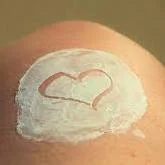Researchers from the University of Liverpool and the Leeds Teaching Hospitals presented results from a study on “Patient and Staff Acceptability of Prophylactic Skin Care: A qualitative service evaluation regarding patient and staff acceptance of prophylactic skin care for breast cancer patients undergoing radiotherapy” at the Annual Radiotherapy and Oncology Meeting of the British Institute of Radiology (BIR) from 17 to 19 March 2021.
A clinically serious side-effect of external beam radiotherapy is skin toxicity. Currently guidelines in the United Kingdom recommend a reactive management strategy and being more inclusive of patient opinion regarding skin care management. Yet, there is a lack of literature on the suitability and/or superiority of topical products.
Led by Anna Southworth, the team examined the lack of information about patients’ preferences regarding radiotherapy skin care, and whether prophylactic skin care is the preferred choice of patients and medical staff. Furthermore, it was important to establish if patients and staff would accept the use of a type of barrier films, such as 3MTM CavilonTM No Sting Barrier.
Based on the semi-structured interviews with patients and staff in a breast specific treatment unit, the team used NVivo V12 software to analyse the results. They found that 92% of patients would use a barrier film if it was provided at the start of treatment. All the patients indicated a preference preventing reactions rather than treating their skin after treatment. The benefits may be psychological as the patient feels more empowered. Furthermore, this underlines patient centred care, as the patients is involved in the decision-making process. The same can for said for all the staff who would welcome testing the effectiveness of such film.
Three themes emerged during interviews: patient ownership of own care, product practically and staff acknowledgement of skin care. Patients prefer the use of prophylactic skin barriers as well as more specific skin care guidance from healthcare staff. Regarding product practically, 93% of patients and all staff would use the proposed product. Staff identified patients who would benefit from using prophylaxis.
As there is a lack of high-quality clinical studies to support topical products within radiotherapy skin care, the researchers recommend more research with a larger randomised control trail to determine the product’s suitability.
Source: https://www.mybir.org.uk/
Image credit: https://news.cancerconnect.com
1. Society and College of Radiographers. Skin care advice for patients undergoing radical external beam megavoltage radiotherapy. Published on Society of Radiographers (https://www.sor.org) 2015.
2. Verkooijen HM, Kerkmeijer LGW, Fuller CD, Huddart R, Faivre-Finn C, Verheij M, et al. R-IDEAL: A framework for Systematic Clinical Evaluation of Technical Innovations in Radiation Oncology. Front. Oncol. 2017; 7: 59.








